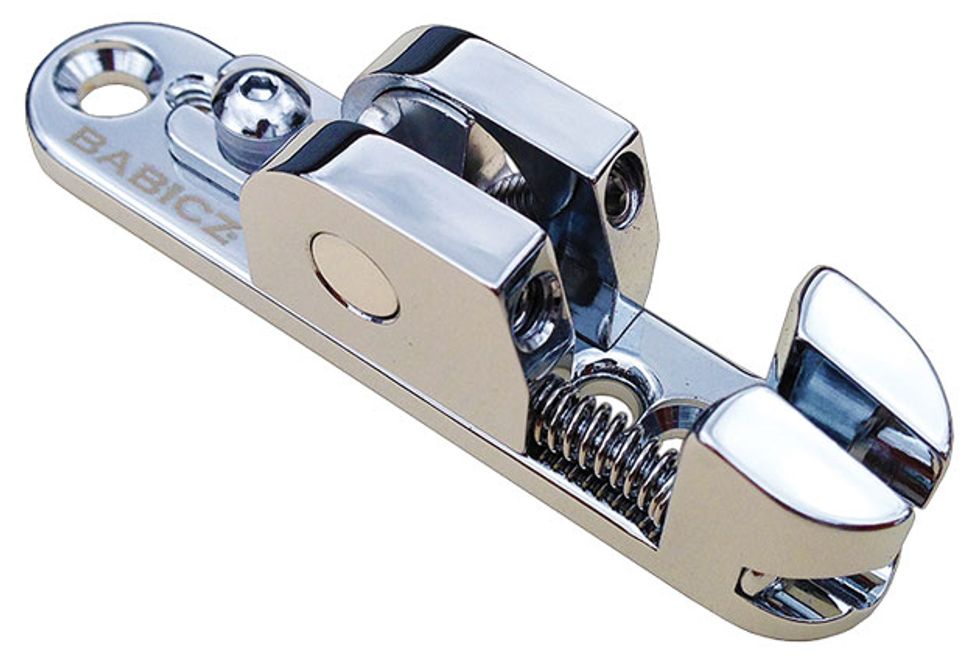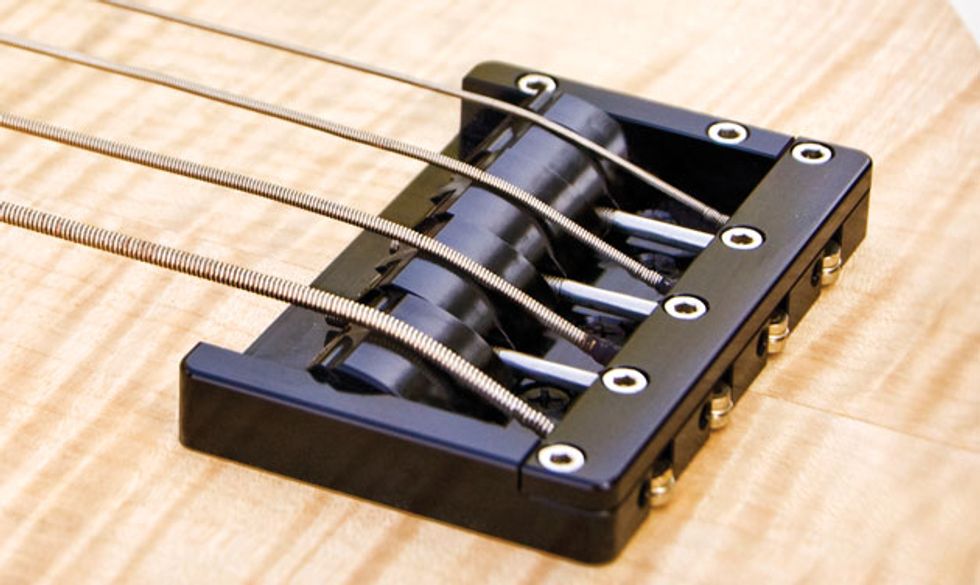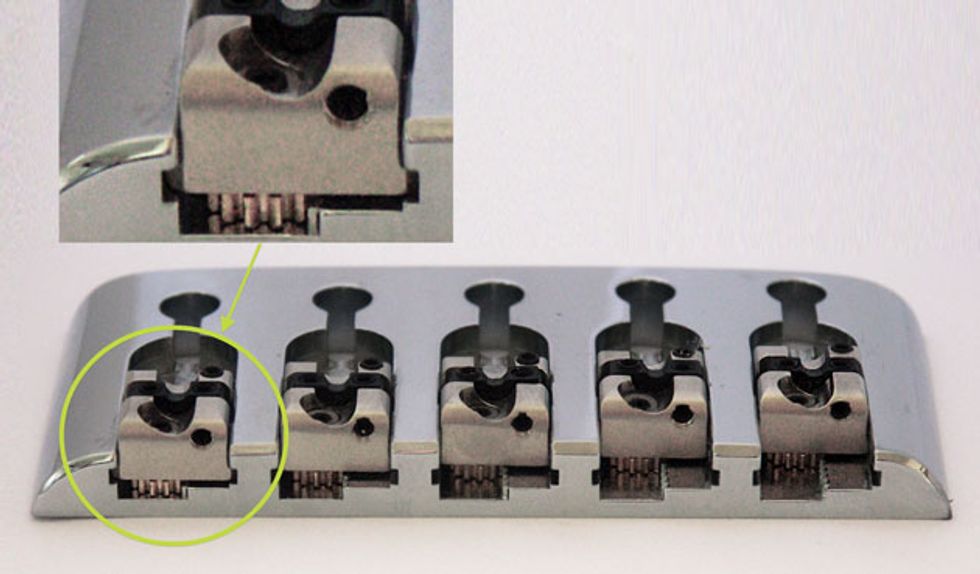What happens when string saddles have a larger contact area with the bridge and body?
Photo 1 courtesy Full Contact Hardware (fullcontacthardware.com).
Now that we’ve looked at how different bridges are constructed [“Exploring Bridge Designs,” June 2014], let’s focus on several specialized designs that aim to enhance tone. For decades, the strings on an electric bass have essentially rested on two or sometimes three tiny screws. This has been true from the very first Fender right up to recent high-mass locking bridges. Though these bridges may look different and vary mechanically, they all have one thing in common: Small saddle-height adjustment screws take all the force from both a string’s downward pressure and its vibrations.
Even though we all can agree the bridge is one of the instrument’s essential components, we don’t often hear it described as being crucial for tone. The argument for a high-mass bridge is basically “Let’s not lose any vibration in the bridge,” while the opposing argument is typically “Jaco only needed a traditional design and this vibrational loss is part of the mojo.”
Photo 2 courtesy KSM Guitars (ksmguitars.com)
There are many forum entries by modders who’ve swapped out bridges and describe rather subtle differences in tone. Could this be because these bridges share those tiny screws at a crucial position? It’s true that most lockable bridges have a better resistance to side movement than those with simpler bent steel saddles, but despite the “more mass is better” argument, it still boils down to the small screws being the essential connection to the bridge base plate and ultimately to the body.
As you’d expect, a few creative minds try to find a different path. Let’s look at two bridges that are engineered to enhance tone by enlarging the contact area. Here’s the basic argument: A larger contact area will enhance tone by maximizing the transfer of string-to-body vibrations. (For now, let’s not discuss if this is what we really want, as there are also reasons why we might want to keep the vibration in the string!) With expanded contact, a string’s downward pressure spreads across a larger area. This means less pressure per area, but on the plus side, a larger contact area can reduce side movement in the saddles.
If string vibration gets lost within the bridge, we can expect a different tone because this is the only vibrational orientation a magnetic pickup is able to track. (A short reminder: Our strings induce a current when they cross the lines of the magnetic field, but do nothing when they move along these lines. For more details, read Gregg Stock’s “Maxwell’s Silver Hammer of the Gods” in the February 2012 issue.)
To my knowledge, there are only two designs that pursue this route of enlarging the contact area: the KSM Foundation Bass Bridge and the Babicz Full Contact Hardware bridge. Both use classic screws to slide the bridge forward or backward to set intonation. While each design replaces the height adjustment screws with a full contact area, the central bridge part differs vastly.
The Full Contact Hardware bridge uses Babicz’ “eCAM” technology with an asymmetrical hyperboloid in its center that moves the string up and down. Not into hyperboloids on a daily basis? Take a look at Babicz web video (fullcontacthardware.com) to see how it works. This technology is available in 4- and 5-string units with a base plate and also as an individual single-string device, the FCH-1 Solo Rail (Photo 1).
The KSM (Photo 2) offers adjustment via a sliding mechanism. The main bridge element is angularly cut into two pieces, so that any movement along the strings changes height. This is tricky to describe, but KSM has a video (ksmguitars.com/bridge.html) with a clever mockup to illustrate this two-piece “ramp-and-saddle” system. One aspect of the ramp slider mechanism is that any change in height also changes intonation. No problem, as long as you finish height adjustment first and then proceed with intonation and avoid quickly readjusting string height onstage. The Foundation bridge also has an elongated string contact zone that will help to enhance vibrational transfer even more.
Photo 3 courtesy ETS Hardware (ets-hardware.com)
And finally, there is one bridge that only partially fits into our discussion—the Transmission Bridge by ETS (Photo 3). The real kicker here is how you set the intonation. Each bridge part has its own gearing mechanism, which moves it back and forth in full contact with the base plate. That said, each saddle has those two small screws for height adjustment.
Okay, everybody wants to know what’s best, right? Although I’m not a fan of the “let that vibration travel anywhere” theory, the answer depends on too many other parameters to declare what will work best for you. A stiff construction certainly helps you achieve a focused and strong tone. Also, not losing any of the vibrations within the bridge will yield a richer tone, but we can only speculate whether this provides the character you’re looking for and how the sound will blend with the rest of your hardware.




